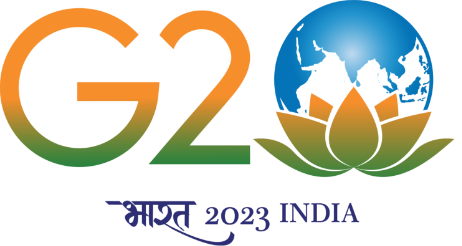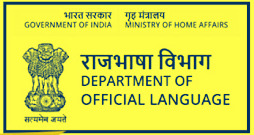- Air Quality Management
- Mandate
- National Air Monitoring programme
- Air quality data
- Graded Response Action Plan
- PAAC - EPC (Environment Protection Charge)
- AQMN Related Portals
- Clean Air Campaign
- Reports
- Publications
- Non Attainment cities /Million Plus Cities
- Source apportionment studies
- Delhi NCR - Old Vehicles List
- Air Quality Management in Delhi-NCR
- National Clean Air Programme
- Specification of Manual –PM 2.5 Sampler
- Specs of Manual PM2.5 Low Volume Sampler
- Water Quality Management
- Quality Assurance/Quality Control
- Waste Management
- Hazardous Waste
- E-Waste
- Municipal solid waste
- Bio Medical Waste
- Plastic Waste
- Rules
- Technical guidelines
- Annual Reports
- Information on Compostable and Biodegradable plastics
- Overview of Plastic Waste
- PWM Publications
- Directions issued
- Registration of Producers/Brand owners (PIBOs) under PWM Rules
- Withdrawl Notice of PRO registration
- Reports Submitted in Hon'ble NGT
- Single Use Plastic (SUP)
- Batteries Management
- Construction & Demolition waste
- Waste Management Technologies
- Used Oil EPR
- Waste Tyre
- Contaminated Sites
- Industrial Pollution
- Pollution Control implementation
- CREP
- Critically Polluted Areas(CPAs)
- Common directions issued
- Monitoring of Industrial Discharge
- Fly Ash Management and Utilization
- Online Monitoring of Industrial Emission & Effluent
- Noise Pollution
- Urban Pollution
- Pollution Control Planning
- Information Technology
- Environmental Training
- NGT/Court Cases
- Public Relations
- Annual Reports
- Infrastructure Development
- Regional Directorates / Project Office
- Old Projects
- Research and Development
Background
It is heartening to note that Zonal Office Kolkata of Central Pollution Control Board has completed its more than 25 years of existence. Taking stock of its achievements over three decades, this office has faced many challenging issues in the environmental sector and will remain in future activities to promote the protection, management and enhancement of the environment. However, much remains to be done. Today, our region faces the challenges of rapid economic growth coupled with an ever increasing population, which has a strong impact on the environment. Uncontrolled Urbanisation and the changing lifestyles of this population have led to an aggravated problem of Waste Management. This office has successfully implemented a number of programmes and projects in a variety of areas, including air and water pollution, protection and management of the coastal environment and environmental legislations. We need to put our best efforts to make our endeavor for the protection of environment from further degradation. We have successfully defined our position by the side of nature and we will create our existence into a memorable one.
Chronological Development
The Central Pollution Control Board (CPCB) established its East North East Regional Office in Calcutta in September 1983 in a building of the Calcutta Improvement Trust (CIT) located in rented space of 2156 sq.ft at 61 Prince Anwar Shah Road, Kolkata – 700 033. It was started and continued as a very small establishment, with only 5 or 6 staff till 1986. By that time the need for a larger establishment alongwith well equipped analytical laboratories (both stationery and mobile) of moderate sophistication became very much pressing to cater for the Central Pollution Control Board’s functional requirements in the 11 Eastern and North Eastern States of the Country viz. Assam, Arunachal Pradesh, Bihar, Manipur, Meghalaya, Mizoram, Nagaland, Orissa, Sikkim, Tripura, West Bengal and the Union Territory of Andaman & Nicobar Islands (functions now handed over to the Union Territory Administration). This expansion of the CPCB’s Calcutta office was necessary in light of the increasing work load created by Ganga Action Plan and also with the enactment of the Environment (Protection) Act, 1986.
The Zonal laboratory of Kolkata office was the first laboratory set-ups of CPCB among the Zonal offices and was upgraded later with the support under GTZ project. It was specially designed to measure micropollutants in air, soil, water and marine waters. This laboratory has gradually increased its capability to analyze more number of parameters every year and especially the air-related analysis have increased in the past.
What has given a boost to the CPCB’s eastern regional wing is that the department of Ocean Development of the Union Government entrusted this regional office with the responsibility of monitoring the quality of off-shore water along the entire east coast of the country. CPCB played a key role in this off-shore water study and the laboratory was extensively used in DOD's COMAPS project and sophisticated equipment like AAS, GC, TOC etc. were installed and being operated.
Mobile Laboratory ”SHODHAN” was constructed and commissioned on January 14, 1988.
The Chairman has communicated to Ministry about the proposal of CPCB to purchase office premises through Kolkata Metropolitan Development Authority at estimated total cost of Rs. 3.5 crores including cost of registration, parking. Accordingly the new office-cum-laboratory at 5th and 6th floor of Southend Conclave was procured from KMDA on 10.03.2005. The refurbishing work of office cum laboratory was assigned CPWD. The office and laboratory shifted to new office premises in the beginning of 2008.
- Pollution Assessment:
- NWMP: Identified Station (Total Nos.- 364)
|
Name of the Stations |
Total no. of NWMP Stations |
|
Bihar |
136 |
|
Odisha |
93 |
|
Jharkhand |
14 |
|
West Bengal |
99 |
Regional Directorate, Kolkata every year performs 25% monitoring of the total stations which pertains to the respective States and results communicated to Head Office, Delhi and respective State Pollution Control Board submits the data of rest Stations to Head Office, Delhi.
- NAMP: Identified Station for 4-States(Total Nos.-78 & Operational Nos.-62)
|
Name of the Stations |
Total no. of NAMP Stations |
|
Bihar |
11 |
|
Odisha |
38 |
|
Jharkhand |
14 |
|
West Bengal |
15 |
Regional Directorate, Kolkata every year performs 25% monitoring of the total stations which pertains to the respective States and results communicated to Head Office, Delhi and respective State Pollution Control Board submits the data of rest Stations to Head Office, Delhi.
- Interstate: CPCB Zonal Office Monitors following 8 Interstate Locations:
|
Sl No. |
Boarder Area |
River |
Concerned States/ Country |
|
1 |
Lakhannath |
Subarnrekha |
Odisha & West Bengal |
|
2 |
Gopiballavpur |
Subarnrekha |
Odisha & West Bengal |
|
3 |
Behragoda |
Subarnrekha |
Odisha & Jharkhand |
|
4 |
Sindri |
Damodar |
Jharkhand & West Bengal |
|
5 |
Dishergarh |
Damodar |
Jharkhand & West Bengal |
|
6 |
Hirakud |
Mahanadi |
Chhatisgarh & Odisha |
|
7 |
Navarnagpur |
Indravati |
Chhatisgarh & Odisha |
|
8 |
Bijoypur |
Churni |
India & Bangladesh |
The monitoring results sent to H.O. from Regional Directorate (East).
- NGRBA:
NGRBA cell inspected and monitored following
- STP: 22 Nos. (The STPs are monitored twice in a year and data submitted to NGRBA cell.)
- Industry: 44 Nos. (Industries are monitored, samples were collected from ETP/ STP and analyzed. Report submitted to NGRBA cell. The monitoring is undertaken as per the requirement of NGRBA cell.)
- RTWQM: 14 Nos. (Manual samples collected from the installed locations. Calibration part is undertaken in presence of M/s Austria Group and results communicated to WQM-II Division, H.O Delhi.)
- Drain: 54 Nos. (The Drains are monitored twice in a year and data submitted to NGRBA cell.)
- Assessment of STPs carried out in the State of Odisha and report sent to H.O Delhi.


















